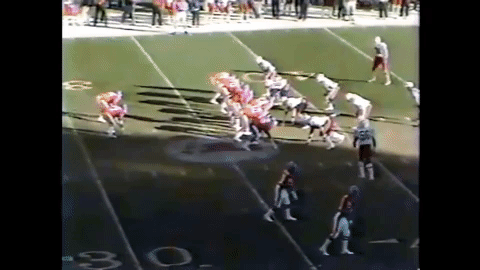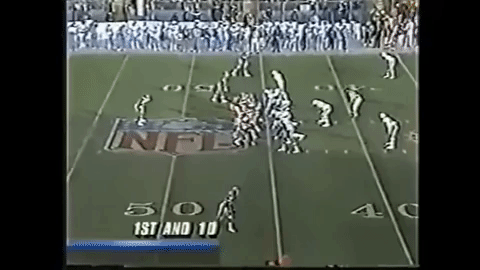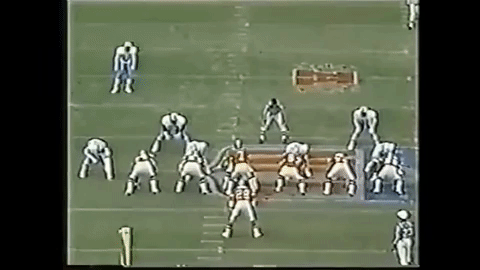It’s finally happening. After years of living in the shadow of first the remnants of the West Coast offense and then the new spread offenses of the 2000s, the Mike Shanahan/Gary Kubiak/Alex Gibbs offense is finally making a breakthrough.
This particular offensive scheme coalesced in 1997, just in time for the Denver Broncos to win back-to-back Super Bowl championships. Skip forward two decades, and Mike Shanahan’s coaching tree is finally starting to blossom. Sean McVay and Kyle Shanahan both developed under Mike Shanahan in their years together in Washington before becoming head coaches. And now, after the success of McVay in Los Angeles and Shanahan The Younger in San Francisco, the rest of the league is trying to find success by hiring their underlings.
It’s about time. The system, built on the “wide zone” play, has always produced greater results than the sum of the parts involved would indicate, but its spread never took off, even after the 1997 and 1998 Super Bowl wins. It has now, though. In fact, six of the top seven teams in terms of outside- or wide-zone percentage in 2019 have connections to Mike Shanahan.
[Editor’s Note: PFF’s advanced statistics and player grades are powered by AWS machine learning capabilities.]

A season ago, the Minnesota Vikings brought in Gary Kubiak — Mike Shanahan’s quarterbacks’ coach in Denver — to help Kevin Stefanski run the offense. Arthur Smith, the Tennessee Titans’ offensive coordinator, spent a year under Matt Lafleur. The Raiders’ offensive line coach is Tom Cable, who spent a season coaching the Atlanta Falcons’ offensive line in 2006 with Alex Gibbs, who was Mike Shanahan’s offensive line coach with the Broncos. The Los Angeles Rams are coached by Sean McVay, who was Mike Shanahan’s tight ends coach in Washington. The San Francisco 49ers are led by Kyle Shanahan, who, at one point, was just a twinkle in Mike Shanahan’s eye. The Packers are coached by the aforementioned Matt Lafleur, who was Sean McVay’s offensive coordinator in Los Angeles and worked under both Shanahans — it’s the seven degrees of wide zone.
And those seven teams accounted for 37% of the outside zone runs in the NFL in 2019.
We’ve finally got to the point where this system is becoming sought after in the NFL. You would have thought after the success of the Broncos in the late 90s that the same blossoming would have occurred, but it didn’t, at least not to the degree that we’ve already seen in the 2010s. The originators of the scheme found their way together in 1995 on Mike Shanahan’s first Broncos staff, and they stayed together until 2003 when Gibbs would go run the system in Atlanta. Kubiak would only leave to become the head coach of the Houston Texans in 2006.
The three coaches spent nine years together in total, so the dissemination of the scheme took a while to spread across the league. And by that point, it might have been old news. It’s not that teams hadn’t been running outside zone — or as they call it, “wide zone” — but the use of it as the focal point of the offense, especially from a single-back set, was contained to this particular coaching tree.
There is a good chance, in the coming years, that if your favorite football team has a coaching vacancy and wants to hire an offensive-minded coach, he could be coming off the “wide zone” coaching tree.
To understand how this offense works, we have to go all the way back to Mike Shanahan’s younger days. We start in 1986, Mike’s second year as the Denver Broncos’ offensive coordinator. The NFL was a heavy split-back and under-center league at the time, and Shanahan did not deviate too much. He did run wide zone, as we can see below against the New England Patriots, but it wasn’t the staple of the offense.

His stint as offensive coordinator in Denver led him to be hired by the Raiders as head coach. However, he only lasted 20 games before returning to Denver to run its offense once again. We can see a slight evolution in his second go-around in Denver, shown below.

That’s a single-back, wide-zone run against the Oilers in the playoffs after the 1991 season. Next (below), we can see a wide-zone boot action with John Elway throwing to the flat route with an intermediate crosser over the top.

Exclusive content for premium subscribers

WANT TO KEEP READING?
Dominate Fantasy Football & Betting with AI-Powered Data & Tools Trusted By All 32 Teams
Already have a subscription? Log in



 © 2025 PFF - all rights reserved.
© 2025 PFF - all rights reserved.